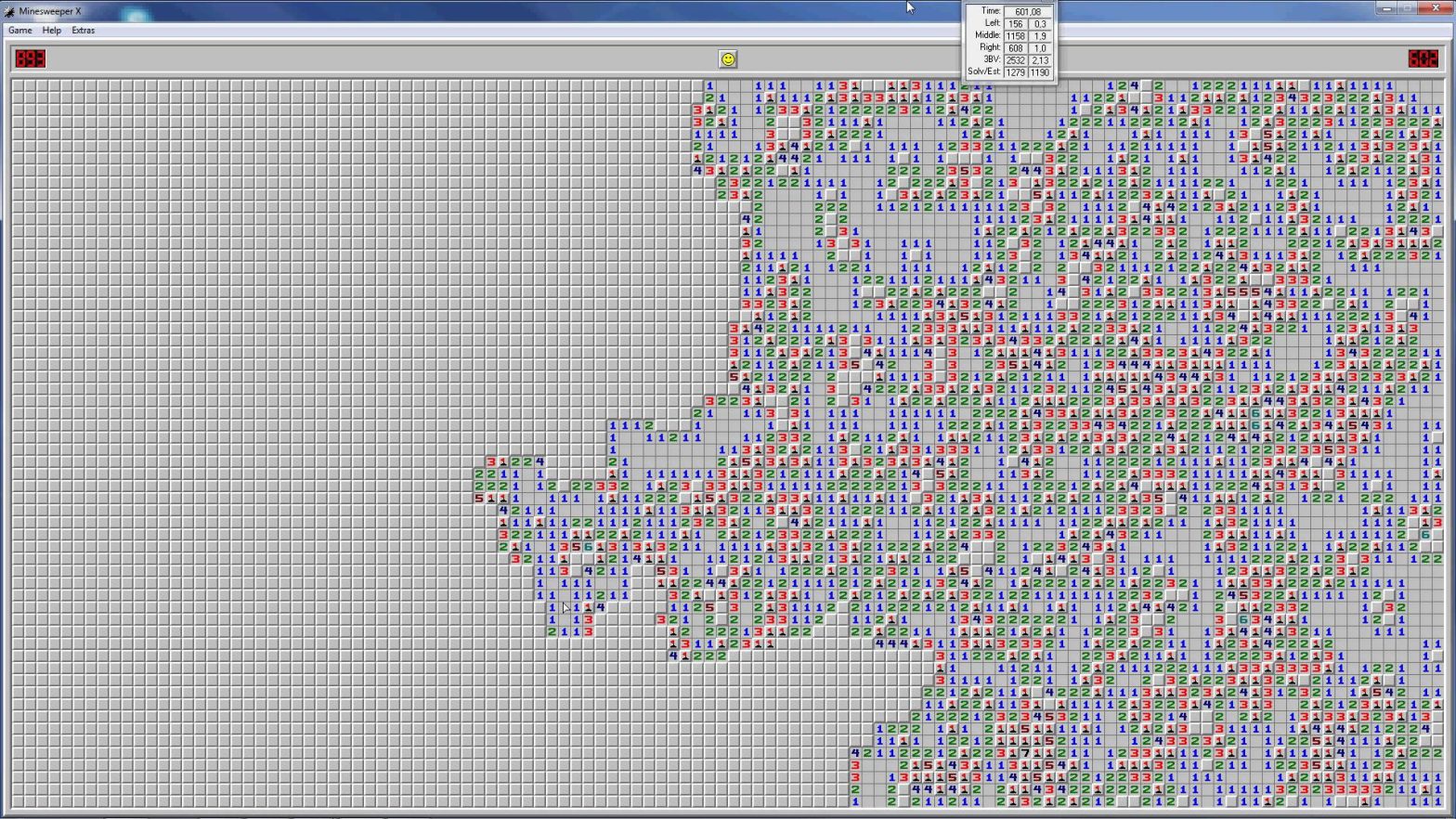For a game that was preinstalled onto computers from its release in 1990 up until the release of Windows 8 in 2012, I’ve met a surprising number of people who have no clue how to play Minesweeper. Chances are, you’re one of those people, and in that case, I’m here to change that. If you’re already familiar with Minesweeper, then stick around, because I’ll be going over some strategies that you might not know about.
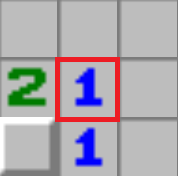
Minesweeper has a single rule. You see that tile in the middle, marked in red? The number on that tile indicates how many of the eight tiles surrounding it are mines. The textured grey tile in the bottom right of the image is an unrevealed tile, which could be a mine, and all of the other tiles are revealed tiles, which are confirmed not to be mines. You can right-click on an unrevealed tile to flag it, which means you believe that that tile is a mine, and you can left-click on an unrevealed tile to reveal it, which will end your run if that tile happens to have a mine. The aim of Minesweeper is to reveal every safe tile on the field.
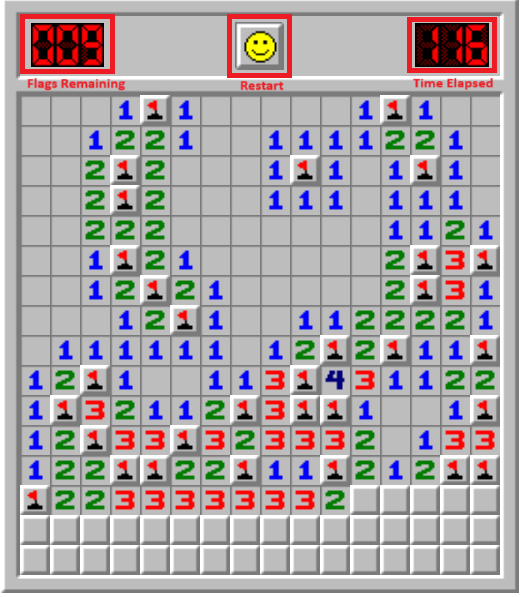
Congratulations! You now know how to play Minesweeper. But you haven’t learned everything yet. There are a multitude of tricks and strategies that you can use to get yourself out of situations that would otherwise require a blind guess.
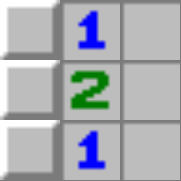
This is a 1-2-1. At first, it seems impossible to solve, since all of the numbered tiles are next to a higher amount of unrevealed tiles. However, it’s actually surprisingly simple to figure this out by going through all possible mine combinations for the two tile. First, the mines can’t be on the top and middle, since that would mean the top one would be adjacent to two mines. The mines can’t be on the middle and bottom for the same reason. With only one combination left, you’ll find that the mines have to be on the top and bottom tiles.
The 1-2-2-1 works for a similar reason. By ruling out combinations of mines, you can find that the mines are on the two tiles directly to the right of the 2s.
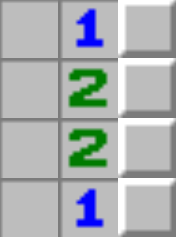
The final, most advanced technique that I will teach you is a technique which I call Mine Subtraction. While this 2-3-2 may look unsolvable, if you ignore the mine in the middle right and adjust the numbers to account for this, the pattern is revealed to actually be a simple 1-2-1. This is the foundation of Mine Subtraction – by subtracting adjacent mines, you can lower tile numbers to reveal simple patterns that can be easily solved.
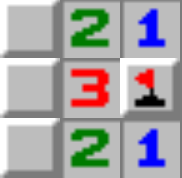
And that’s the end of this article! There are several websites that you can play Minesweeper on, but I recommend this site, which is simple and easy to use. If you’re looking for something different, there are also several sites that offer their own unique spins on the game. I hope this article taught you something new, whether you’re new to Minesweeper or familiar with it.
